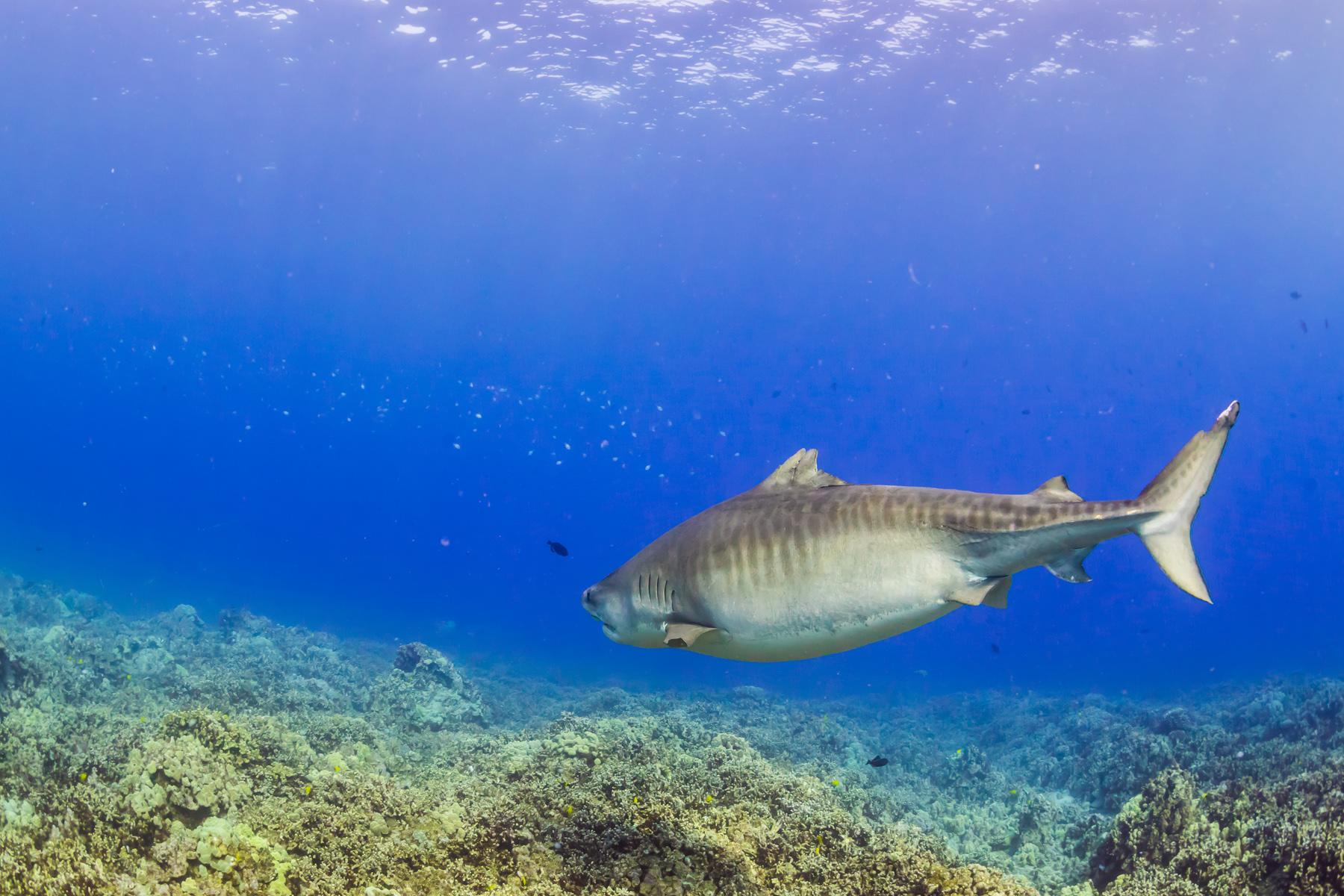Everyone's biggest beach fear is attacking more and more people.
For many (everyone?), the beach is an escape from the worries of everyday life where you can just plop down in the smooth sand under an umbrella and enjoy that deliciously twisted read you’ve been putting off. At some point, you may decide to venture into the waters–let’s say Hawaii’s crystal clear ones—and, as you enjoy the refreshing dip, floating belly up, you might notice something swimming toward you at an alarming rate followed by a sharp pain in your leg. Next thing you know, you’re being dragged rapidly underwater and fighting for your life.
That’s what happened to a 65-year-old Californian tourist who was killed in Maui, Hawaii, last weekend. The victim of a suspected shark attack, the man was spotted swimming in distress near the Kaanapali Shores Resort. Rescuers quickly brought him to shore via a jet ski but because of his extensive injuries, which included the loss of his left leg, the unidentified man did not survive.
According to the state’s Division of Aquatic Resources, this is the sixth documented shark attack to occur in Hawaii this year. That’s twice as many as in 2018. Before that, a person had not been killed by a shark in The Aloha State since 2015 (which also occurred in Maui). While the species of the recent attack has yet to be confirmed, the Honolulu Star-Advisor reports that tiger sharks are more than likely responsible.
Recommended Fodor’s Video

Jason Redulla, chief of Hawaii’s Division of Conservation and Resource Enforcement (DOCARE) told ABC News, “There is always the potential for conflict between animal and human and we just have to be aware of that and respect that.”
Are Sharks Interactions Becoming More Frequent Around the World?
The short answer? “Yes.” And climate change may be to blame. Information released by the International Shark Attack File (ISAF), a database of all reported shark attacks, shows that warmer waters and more beachgoers were to blame for a spike in “unprovoked [shark] attacks” in recent years. In 2015, 98 people, a record-high, were reportedly attacked by sharks across the globe without provocation. While that number dropped in 2016 to 81, it shot back up to 88 in 2017. Fortunately, last year, that number decreased significantly to 66. However, a recently-released study from Louisiana State University did find that shark attacks (unprovoked or otherwise) have increased over time. Additionally, data shows that the United States experiences the most unprovoked shark attacks in the world.
What Do I Do if I See a Shark?
While the answer to this question might seem obvious or frustrating, it works: don’t panic.
If you’re in the water, stay calm and move quickly and smoothly to shore; sudden, erratic motions attract sharks.
If a shark is swimming around you, make and keep eye contact with it. Sharks are ambush predators and feel less comfortable attacking when watched, reports CNN. If a shark casually swims by you, curl into a ball. Sharks can be particularly aggressive if they see you as a threat or a potential competitor for fish it could be pursuing.
Best Practices, Continued
Obviously, you should not venture into waters known to be visited by dangerous sharks if you are bleeding, but did you know that it’s also a good idea to avoid wearing metal jewelry? The reflection could be mistaken for fish scales. Whenever possible, swim in groups and avoid swimming at night (when it’s harder to spot a shark) or in visibly polluted water. Trash attracts fish, which in turn attracts sharks.




